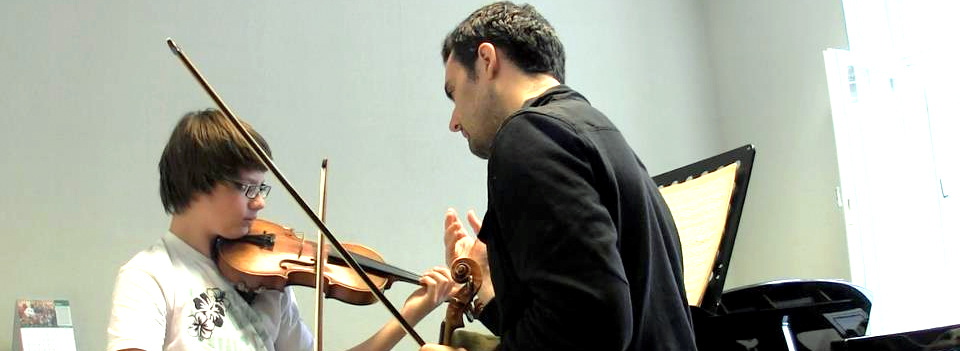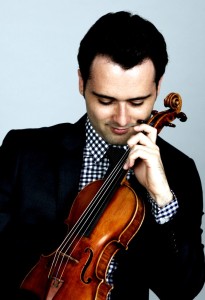Take Violin Lessons Online
with David Lisker, Juilliard Graduate and former student of Itzhak Perlman!

Internationally acclaimed violinist, David Lisker, has proven to be one of the brightest violin teachers of his generation. In addition to his private studio in New York City, David offers lessons to students around the world via Skype. Having studied with some of today’s most remarkable musicians, including Itzhak Perlman and Pinchas Zukerman, arguably two of the greatest violinists of the 20th century, David Lisker offers his students the rare opportunity to discover some of the priceless secrets that make these legends so great.
Whether you are a parent seeking a friendly and patient teacher for your child, a music lover who just wants to improve your playing, or an advanced violinist looking to play for someone with decades of performing experience, you have come to the right place!

About Online Lessons

With technology advancing exponentially every year, the world of education is now starting to tap into the incredible potential of online learning. David Lisker received his Bachelor of Music Degree from the Manhattan School of Music where he studied with star violinist Pinchas Zukerman. At the time of his studies, Zukerman was Music Director of the National Arts Centre in Ottawa, so half of his lessons were taught via video conference. This was an invaluable experience for David, training him how to not only be a good student, but how to be a good teacher in the online world.
Benefits
- Access to Better Teachers – Not all teachers are created equal, and with online lessons, you no longer have to settle on mediocrity just because there aren’t better options in your area. With location not a factor, David has happy online students all over the world including Los Angeles, London, and Bolivia.
- Convenience – Through conventional means, in order to take lessons you either have to drive somewhere, or invite a stranger into your home. With Skype, both of these hassles are eliminated. You or your child can have a fully interactive lesson from the comfort and safety of your home regardless of whether you have access to a car.
- You Can See Yourself – When studying on Skype, not only do you have a display of your teacher, but you also have a display of yourself. This allows you to actually watch yourself on your computer to see if you are doing what the teacher is asking of you (playing with a straight bow, holding the violin up, correct posture, etc.).
- Study with a Touring Artist – If you study with a teacher who has a performing career, you will find that he or she could be away for months at a time. This kind of sporadic schedule can be detrimental to learning the violin. With online lessons, David is able to teach his students regardless of where his touring schedule might take him. As long as he has access to the internet, his students get their scheduled lessons.
Are Online Lessons Right For You?
Online lessons are not for beginners. In order for David to be effective as a teacher, the student must be sufficiently experienced and responsive in order to make adjustments without physical contact. Age is less of a factor since everyone develops at their own pace, but for younger kids it is highly recommended that a parent is present.
David’s Credentials

- Bachelor of Music Degree from the Manhattan School of Music where he studied with Pinchas Zukerman and Patty Kopec.
- Master of Music Degree from the Juilliard School where he studied with Itzhak Perlman and Nick Eanet, former first violinist of the Juilliard String Quartet and long time concertmaster of the Metropolitan Opera.
- Over 10 years of private teaching experience working with students of all ages and levels.
- Has given masterclasses at many universities and festivals including Guadalajara University in Mexico, Summertime Festival in Latvia, California State University in Long Beach, the Palace Theater Summer String Quartet Festival in Connecticut, and the St. Andrew Music Festival in Hungary.
- Was just 1 of 18 violinists selected to study in the Perlman Music Program which he attended for 7 years, as well as the National Arts Centre Young Artists Program in Ottawa, Canada.
- Received chamber music training from Robert Mann (founding member of the Juilliard Quartet), Joseph Kalichstein, Larry Dutton (violist of the Emerson Quartet), Seymour Lipkin, and Michael Tree (violist of the Guarneri Quartet)
Method

Proper Setup
The first step towards playing the violin well, is to learn how to properly hold both, the violin and the bow. It is a primary goal to make sure that your setup allows you to play the violin for as long as you wish, with as little tension and discomfort as possible in order to avoid pain and injury.
You’ve Learned How to Hold the Violin, What’s Next?
There are two equally important elements in violin playing: the Physical (Technique), and the Emotional (Musicality). If one focuses solely one or the other, we are left with an unfinished, and often unrefined product. The idea is to divide and conquer; isolate the various elements within the two categories, bring them to a high level individually, and finally combine everything resulting in a performance that is both technically brilliant and musically inspiring.
• sound production
• intonation
• bow techniques
• vibrato
• dynamics
• shifting
• breathing
• psychological aspect
• inspiration
• interpretation
• intensity
• variety of tone colors
How to Develop Technique
Every person is different, therefor there is no one method or strategy that will work universally. After your (or your child’s) first lesson, a plan will be outlined on what etudes, technique books, scales, and pieces would be best fitting for your specific needs.
Some examples of technique building etudes for various levels are:
Suzuki Books
Schradiek School of Violin Technique Books 1-4
Sevcik School of Bowing Technique
Sevcik School of Violin Technique
Kayser 36 Studies
Sevcik Trill Studies
Sevcik Shifting
Wohlfahrt 60 Studies
Kreutzer 42 Etudes
Sevcik Double Stops
Suzuki Books 9, 10
Dont 24 Prepartory Exercises
Fiorillo 36 Caprices
Rode 24 Caprices
Gavinies 24 Etudes
Flesch Scales
Paganini Caprices
Dont 24 Etudes
Wieniawski Etudes Caprices
Ernst Six Polyphonic Etudes
**Needless to say, it is not expected that students play all of these etudes, it is just an idea of the literature that is available. Furthermore, many of these books belong in all 3 columns, so using simplistic labels as Beginners, Intermediate, and Advanced is actually meaningless.
The Role of a Good Teacher
Many people view violin playing as something otherworldly, or abstract. Although music definitely has those qualities, the actual process of playing the violin is quite simple to put into words if one knows the correct vocabulary.
A good teacher should:
- Make sure that the student has all the pertinent information they need in order to succeed in the objective they’ve been assigned.
- Treat each student as an individual, providing instruction catered to their specific needs, technical abilities, schedule, etc.
- Teach the student what to listen for, transforming them in to their own teacher.
- Provide constructive criticism with an ever-present underlying positive reinforcement
- Not only describe what to do, and how, but why.
- Finish each lesson with a clear understanding as to what is expected of the student for the coming week.